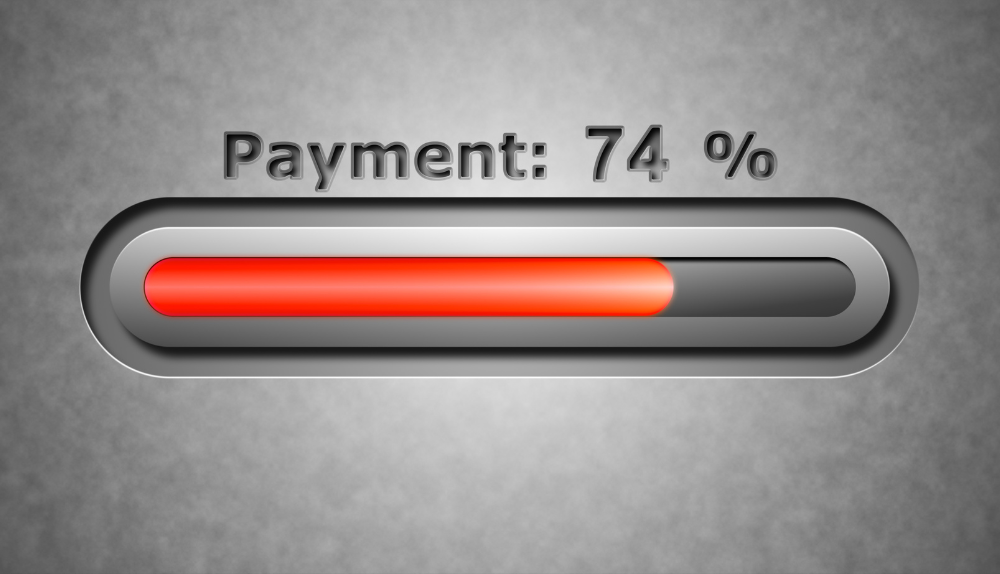
By max June 23, 2023
Credit card payment processing has a high demand worldwide and in nearly every industry. Whether it’s booking a concert, buying groceries, shopping for luxury items, or making international transactions, the credit card is the most preferred choice. In fact, 73% of young adults have credit cards.
However, accepting card payments is not easy and free for merchants. They are supposed to create a merchant account with an acquiring bank and pay a fixed fee on each credit card transaction. Getting a merchant account is pretty challenging for businesses operating in high-risk industries or are categorized as high-risk because of the high chargeback ratio.
Fortunately, there are other payment processing options for such companies. In this post, we are going to explore third-party payment processing and its pros & cons.
What Are Third-Party Payment Processors?

Third-party payment processing allows merchants to process credit card transactions without creating a merchant account. The option is much better and easier, as you don’t have to go through the lengthy and complex process of applying for a merchant account. Usually, third-party payment processors accept your application within minutes. Additionally, they offer a simple fee structure.
Simply put, third-party payment processors allow merchants to accept credit/debit card transactions. Merchants usually prefer this kind of payment method, as it’s easy to apply for and helps them start selling right away. There’s no complex paperwork required. It’s very convenient. While it may seem like the best option for merchants accepting card payments, it comes with its share of drawbacks. Minimal security and extra fees, for instance, are the common issues people face with third-party payment processing.
How Does It Work?
Third-party payment processors are aggregators. Instead of assigning an individual merchant account to each user, they combine all merchant accounts into a single account. All payments are processed through this account after a small percentage of the transaction fee is deducted. The remaining balance is automatically transferred to the individual merchant’s bank account. Simply put, if you choose third-party payment processing, you will be sharing the merchant account with others.
This may seem complicated, but all of this happens at the backend. You can have the funds transferred to your bank easily, just like you’d receive money if you created a merchant account. The only issue, however, is the long waiting time. Since the payment has to pass through the aggregator, it will take longer than usual to reflect on your bank account.
The fee structure is comparatively less complex in third-party payment processing as compared to merchant accounts, but you will end up paying more in the long run. Each transaction will incur the normal card processing fee and the additional charge that the third-party processor will add.
Third-Party Payment Processors Vs. Merchant Accounts

It’s clear that third-party payment processors offer a more streamlined approach to payment processing, a flat fee structure, quick account approval, and straightforward processing. They don’t have any stringent policies regarding contract termination. If you do not like the service, you can switch the processor anytime without incurring the termination fee.
In addition, they offer reasonably-priced POS and other technology that facilitates all kinds of transactions—from in-store to online payments. Coming to the downside, the merchant’s account security level is unmatchable. You can’t get that from third-party payment processors. They might also freeze your accounts if your chargeback ratio increases.
Standalone merchant accounts offer different, customizable payment plans. They are created based on the sales volume, types of transactions, nature of your business, and other factors. You can get cheaper plans than the fixed fee charged by your third-party payment processors. The best part is funds are transferred to your bank account faster than third-party processors.
That said, merchant accounts are also linked to certain drawbacks. For instance, you don’t get quick account approval or free account setup. These accounts come with setup and cancellation fees. The account setup can take weeks, as the acquiring bank will research your industry, business type, and risk factor before approving the application.
Pros of Third-Party Payment Processing
Third-party payment processing is a good choice for merchants operating in a high-risk industry. But it has many advantages you should know. Let’s see why third-party payment processors make a great choice for merchants looking for a flexible and straightforward card processing method.
Low-Cost Setup
The initial setup cost for third-party payment processing is far lesser than the merchant accounts. You get all the payment processing equipment from the payment processor you choose. This includes point-of-sale systems for your retail payments.
Many third-party processors offer portable card readers for mobile payments. This enables merchants to receive payments on the go. You can start processing transactions fairly quickly and with negligible setup cost. For those who do not have the startup capital to set up their standalone merchant accounts, third-party payment processors make a great choice.
Flexible Term
With a standalone merchant account, you sign an agreement that clearly specifies the term of the contract. If you cancel your contract before the term is up, you will be charged a cancellation fee.
You will be relieved from the exorbitant early termination fee if you choose third-party payment processors. They offer a flexible contract. As mentioned earlier, you can choose to switch the third-party payment processors if you wish. You don’t have to think about the hefty cancellation fee either.
No Complex Requirements
The long and complex underwriting process when you apply for a merchant account can get very hectic. That’s one of the many reasons people prefer third-party credit card processors over a standalone merchant account. Most third-party payment processors have a simple approval process, allowing you to start accepting payments instantly.
Good Choice For High-risk Businesses
Another advantage of third-party payment processing is that it’s an excellent choice for high-risk businesses. Finding an acquiring bank that works with you is quite difficult if you fall into the high-risk business category.
Whether it’s because of a high chargeback ratio or you are involved in a controversial business, you can easily find a third-party payment processor that will accept your credit card processing application.
Simple Fee Structure
Unlike merchant accounts, third-party payment processors have a simple fee structure. There’s no surprising fee on the statement. The fee can be slightly higher than what you’d pay to the acquiring bank for a standalone merchant account. But you will enjoy a transparent fee structure in this payment model.
Cons of Third-Party Payment Processing
Just like other payment methods, third-party credit card processing comes with its share of drawbacks you should be aware of before applying for it.
Higher Fees
The convenience you get with third-party payment processors does not come for free. They charge a comparatively higher fee than the normal fee for credit card transactions. A third-party payment processor doesn’t have stringent policies for accepting your application. This gives merchants an advantage, especially high-risk merchants. The third-party payment processors keep a portion of the card processing fee.
Minimal Security
When it comes to chargeback, the customer gets an advantage. This means for every fraudulent card transaction, the merchant has to bear the financial loss. Some third-party payment processors provide high security, but some lack the necessary security protocols. Since merchants cannot customize the security features when working with a third-party processor, your only option is to bear the risk.
High Turnover Rates
Many people switch third-party payment processors frequently because of the lack of personalized experience. It’s obvious that you won’t get special treatment when working with an aggregator that combines your and their other clients’ payments into a single centralized system. It’s easier for them to manage credit card transactions this way. But that also means you won’t be their priority. That’s why people go from third-party payment processing to a standalone merchant account.
Lack of Integration
A business requires a payment processing software that can easily integrate with third-party solutions for flexible business operations. For example, you must be able to integrate your payment processing with payment gateway, loyalty programs, and accounting solutions. Merging these solutions allows you to transfer the data between systems automatically. Sadly, not every third-party payment processor integrates with all software applications. They might be merged with certain apps, but that’s all.
Customer Support Can Be Better
Customer support service can vary significantly from one payment processor to another. But third-party payment service providers have the reputation of offering sub-par customer support. As accounts tend to freeze often, it gets frustrating for customers to process payments when they can’t reach out to the support department.
Conclusion
So, is the third-party payment processor right for your business? You should make a decision based on your industry type and business’ size. While these payment processors allow an easy account setup, quick approval, and simple fee structure, they are often expensive in the long run. As your business scales, you will most likely benefit from a standalone merchant account with a reputable payment processor. It’s best to avoid third-party payment processors, unless your business is categorized as high-risk.
